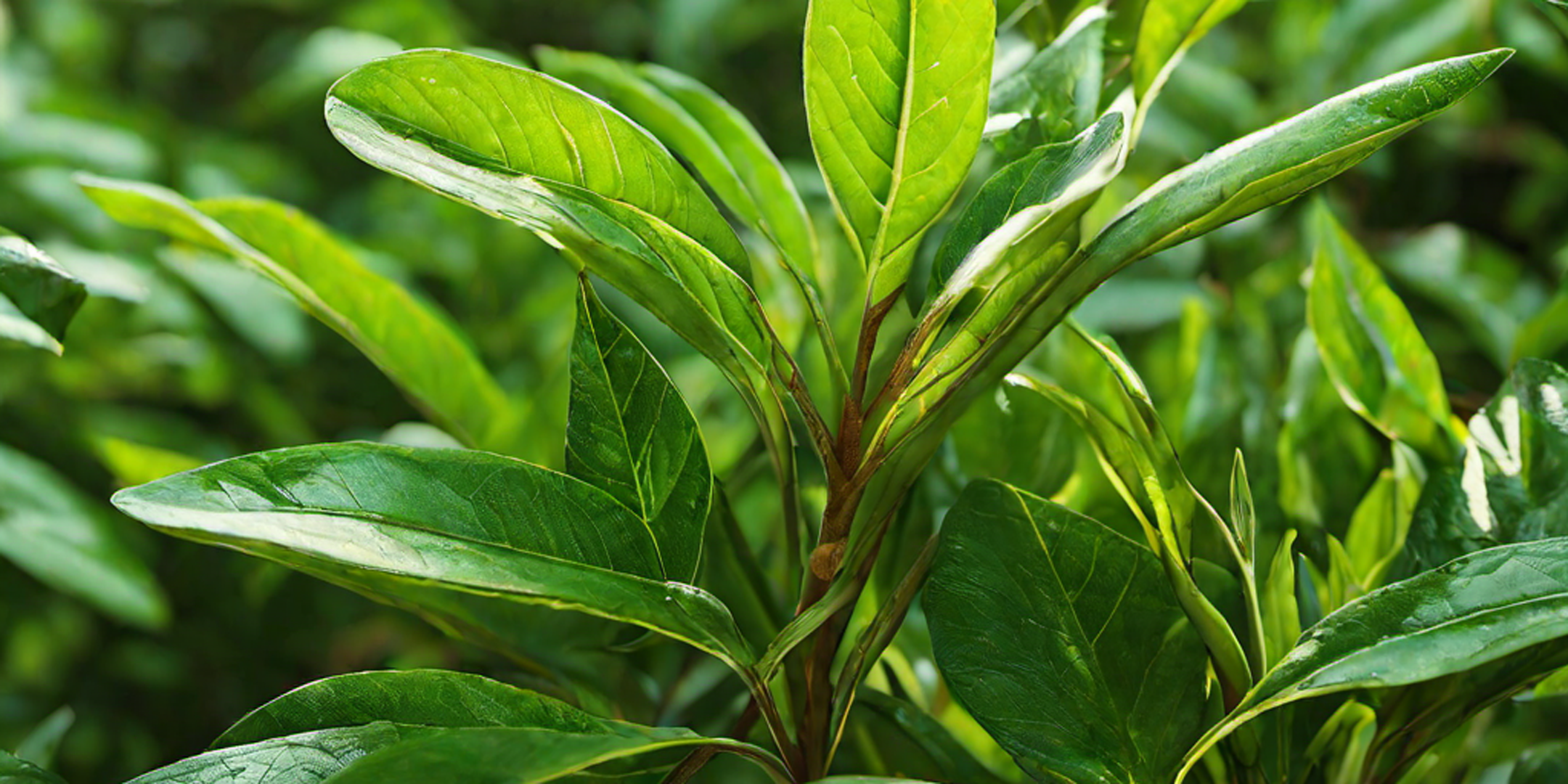Tea enthusiasts know that not all teas are created equal. The taste, aroma, and overall character of a tea can vary depending on where it is grown. This unique sense of place, known as terroir, plays a crucial role in the world of tea.
Understanding terroir and its importance
Terroir refers to the combination of environmental factors, such as soil, climate, altitude, and rainfall, that contribute to the distinct qualities of a tea. As the concept applies to wine or coffee, terroir shapes the flavors, fragrances, and nuances of different tea varieties.
Terroir is a term often associated with wine, but it is equally important in the world of tea. The unique characteristics of the land where tea is grown have a profound impact on the final product. The soil composition, temperature, humidity, and elevation all influence the growth and development of the tea plant, resulting in teas with distinct flavors and aromas.
Understanding terroir is essential for tea enthusiasts who want to explore and appreciate the wide range of flavors and nuances that different teas have to offer. By understanding the unique qualities of each tea-growing region, we can make informed choices and discover teas that align with our personal preferences.
Factors that influence tea terroir
Several factors contribute to the unique terroir of a tea-growing region. These factors include soil composition, climate, altitude, and rainfall. Explore these factors in more details:
Soil Composition: The type of soil in which tea plants are grown plays a significant role in the flavors and characteristics of the tea. Different soil types have different mineral compositions, which can affect the nutrient content of the tea leaves. For example, volcanic soil is known to contribute to the unique flavors found in teas grown in regions like Darjeeling.
Climate: The climate of a tea-growing region determines the overall growing conditions for the tea plants. Factors such as temperature, humidity, and the number of sunny days all influence the growth and development of the tea leaves. For example, teas grown in cooler climates may have a lighter and more delicate flavor profile compared to teas grown in warmer regions.
Altitude: The altitude at which tea plants are grown can have a significant impact on the flavors and aromas of the tea. Higher altitudes often result in slower leaf growth, which can lead to teas with more complex flavors and aromas. Teas grown at higher altitudes also have a more nuanced and refined taste.
Rainfall: The amount of rainfall a tea-growing region receives is another crucial factor that contributes to the terroir of the tea. The timing and consistency of rainfall can affect the growth and development of the tea leaves. Regions with consistent rainfall throughout the year may produce teas with a more robust and full-bodied flavor, while regions with distinct wet and dry seasons may produce teas with more pronounced seasonal variations.
By understanding these factors, tea enthusiasts can gain a deeper appreciation for the unique qualities that each tea-growing region brings to the table.
Exploring the different tea-growing regions and their unique terroir characteristics
Tea is grown in various regions around the world, each with its unique terroir characteristics. Let's explore some of the most renowned tea-growing regions and the flavors they are known for:
Darjeeling, India: Darjeeling is often referred to as the "Champagne of Teas." The region's high altitude, cool climate, and well-drained soil contribute to the production of delicate and floral teas. Darjeeling teas are known for their muscatel flavor and distinct aroma.
Assam, India: Assam is famous for its robust and malty black teas. The region's hot and humid climate, combined with the fertile soil of the Brahmaputra River valley, creates ideal conditions for growing tea. Assam teas are often used in breakfast blends and are known for their strong flavor and rich color.
Uji, Japan: Uji is one of the most renowned tea-growing regions in Japan. The region's fertile soil, shaded growing conditions, and careful processing techniques result in high-quality matcha and gyokuro teas. Uji teas are known for their vibrant green color, umami flavor, and sweet aroma.
Anxi, China: Anxi is the birthplace of oolong tea, and the region is known for producing some of the finest oolong teas in the world. The unique terroir of Anxi, with its rocky soil and mild climate, contributes to the floral, fruity, and complex flavors found in Anxi oolongs.
These are just a few examples of the diverse flavors and characteristics that different tea-growing regions bring to the table. Exploring teas from various regions allows us to experience the breadth and depth of the world of tea.
How terroir affects tea flavor and quality
Terroir plays a crucial role in shaping the flavor and quality of tea. Here are some ways in which terroir influences tea:
Flavor Profile: The combination of soil, climate, altitude, and rainfall contributes to the unique flavor profile of a tea. Soil composition affects the mineral content of the tea leaves, while climate and altitude influence the growth and development of the tea plant. These factors, along with processing techniques, result in teas with distinct flavors, ranging from floral and fruity to earthy and robust.
Aroma: Terroir also affects the aroma of tea. The volatile compounds present in the tea leaves contribute to the fragrance and aroma of the brewed tea. Different terroirs can produce teas with aromas ranging from floral and vegetal to woody and smoky.
Texture: The terroir of a tea-growing region can also influence the texture of the brewed tea. Factors such as altitude and rainfall can affect the size and shape of the tea leaves, which, in turn, can impact the mouthfeel of the brewed tea. Higher-altitude teas, for example, often have a smoother and silkier texture compared to teas grown at lower altitudes.
Quality: Terroir is closely linked to the overall quality of the tea. The unique growing conditions of a tea-growing region can result in teas with exceptional flavor, aroma, and texture. Tea producers who understand and respect the terroir of their region can produce high-quality teas that are sought after by tea enthusiasts around the world.
Understanding how terroir influences tea flavor and quality allows us to appreciate the craftsmanship and artistry that goes into producing exceptional teas.
The role of terroir in tea production and processing methods
Terroir not only influences the flavors and characteristics of tea but also plays a role in the production and processing methods. Tea producers take into account the unique terroir of their region when deciding on the cultivation and processing techniques to use. Here are some ways in which terroir influences tea production:
Cultivar Selection: The choice of tea cultivar is influenced by the terroir of the region. Different tea cultivars have varying characteristics and are suited to different growing conditions. Tea producers select cultivars that are well-adapted to the soil, climate, and altitude of their region, ensuring that the tea plants thrive and produce high-quality leaves.
Growing Techniques: Tea producers employ various growing techniques to optimize the terroir of their region. This can include practices such as shading the tea plants to control sunlight exposure or implementing organic farming methods to preserve the natural balance of the soil and ecosystem. These techniques help enhance the unique qualities of the terroir and produce teas with exceptional flavor and quality.
Processing Methods: The processing methods used to transform freshly picked tea leaves into the final product also take into account the terroir of the region. Different terroirs may require specific processing techniques to bring out the desired flavors and characteristics of the tea. For example, teas grown in high-altitude regions may undergo longer withering times or specific rolling techniques to release the unique flavors locked within the leaves.
The role of terroir in tea production highlights the deep connection between the land, the tea plants, and the final product. Tea producers who understand and respect the terroir of their region can create teas that showcase the best of what nature has to offer.
Appreciating the diversity of teas based on terroir
One of the joys of being a tea enthusiast is the opportunity to explore the wide range of flavors and nuances that different tea-growing regions have to offer. Each cup of tea tells a story of the land it was grown in, the climate it experienced, and the craftsmanship of the tea producer.
By appreciating the diversity of teas based on terroir, we can embark on a journey of discovery and exploration. We can explore teas from different regions, compare their flavors and characteristics, and develop a deeper understanding of the impact that terroir has on the final product.
Just like a wine connoisseur appreciates the unique qualities of wines from different vineyards, a tea enthusiast can develop a similar appreciation for teas based on their terroir. By honing our tasting skills and paying attention to the subtle nuances in flavor, aroma, and texture, we can unlock a world of sensory experiences and broaden our tea palate.
The impact of terroir on tea pricing and market value
Terroir plays a significant role in the pricing and market value of tea. Teas from renowned tea-growing regions with exceptional terroir characteristics are often highly sought after and command higher prices in the market. The reputation and quality associated with teas from these regions contribute to their premium status.
Teas from regions with unique terroirs and limited production quantities can become highly prized among tea enthusiasts. For example, teas from high-altitude regions or regions with specific microclimates may have limited availability, making them more exclusive and desirable.
The market value of tea is also influenced by the skill and expertise of the tea producer in harnessing the potential of the terroir. Tea producers who have mastered the art of working with their region's terroir can create teas that are in high demand and command higher prices.
It is important to note that while terroir contributes to the pricing and market value of tea, it is not the sole determinant. Factors such as tea quality, rarity, and demand also play a role in determining the value of a tea.
How to identify and appreciate terroir in teas
Identifying and appreciating terroir in teas requires a combination of knowledge, experience, and sensory awareness. Here are some tips to help you develop a deeper appreciation for terroir in teas:
- Educate Yourself: Learn about the different tea-growing regions and their unique terroir characteristics. Understand how factors such as soil, climate, altitude, and rainfall influence the flavors and qualities of teas.
- Taste and Compare: Taste teas from different regions and compare their flavors, aromas, and textures. Pay attention to the nuances and differences between teas. Take notes and document your tasting experiences to help you develop a deeper understanding of the impact of terroir.
- Experiment with Brewing: Try brewing the same tea using different brewing parameters, such as water temperature and steeping time. Notice how these parameters can affect the flavors and characteristics of the tea. Experimenting with brewing can help you uncover hidden nuances and appreciate the impact of terroir on the final cup.
- Engage with Tea Communities: Join tea communities or attend tea tastings and workshops. Engage with fellow tea enthusiasts and professionals to learn from their experiences and insights. Sharing knowledge and experiences can deepen your understanding of terroir and help you discover new teas to try.
- Trust Your Senses: Trust your senses when tasting teas. Pay attention to the flavors, aromas, and textures that resonate with you. Developing your sensory awareness will enable you to appreciate and identify the unique qualities of teas based on their terroir.
By following these guidelines, you can enhance your ability to identify and appreciate terroir in teas, opening up a world of exploration and enjoyment.
Conclusion: Embracing the significance of terroir in the world of tea
Terroir is a concept that holds great significance in the world of tea. It encompasses the unique combination of environmental factors that contribute to the distinct flavors, aromas, and qualities of teas from different regions.
Understanding terroir allows us to appreciate the craftsmanship and artistry that goes into producing exceptional teas. It empowers us to make informed choices and explore the wide variety of flavors and nuances that each tea-growing region has to offer.
As tea enthusiasts, let us embrace the significance of terroir and embark on a journey of discovery and appreciation. Let us savor each cup of tea, knowing that it carries the essence of the land it was grown in, and celebrate the diversity and complexity that terroir brings to the world of tea.




